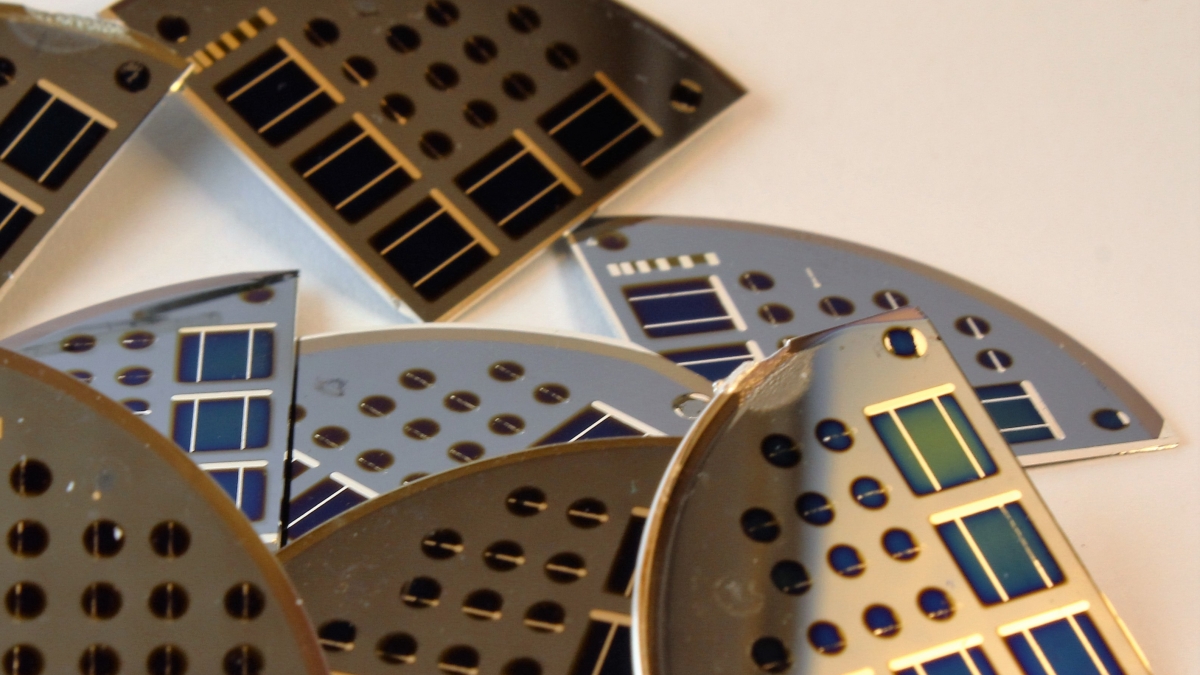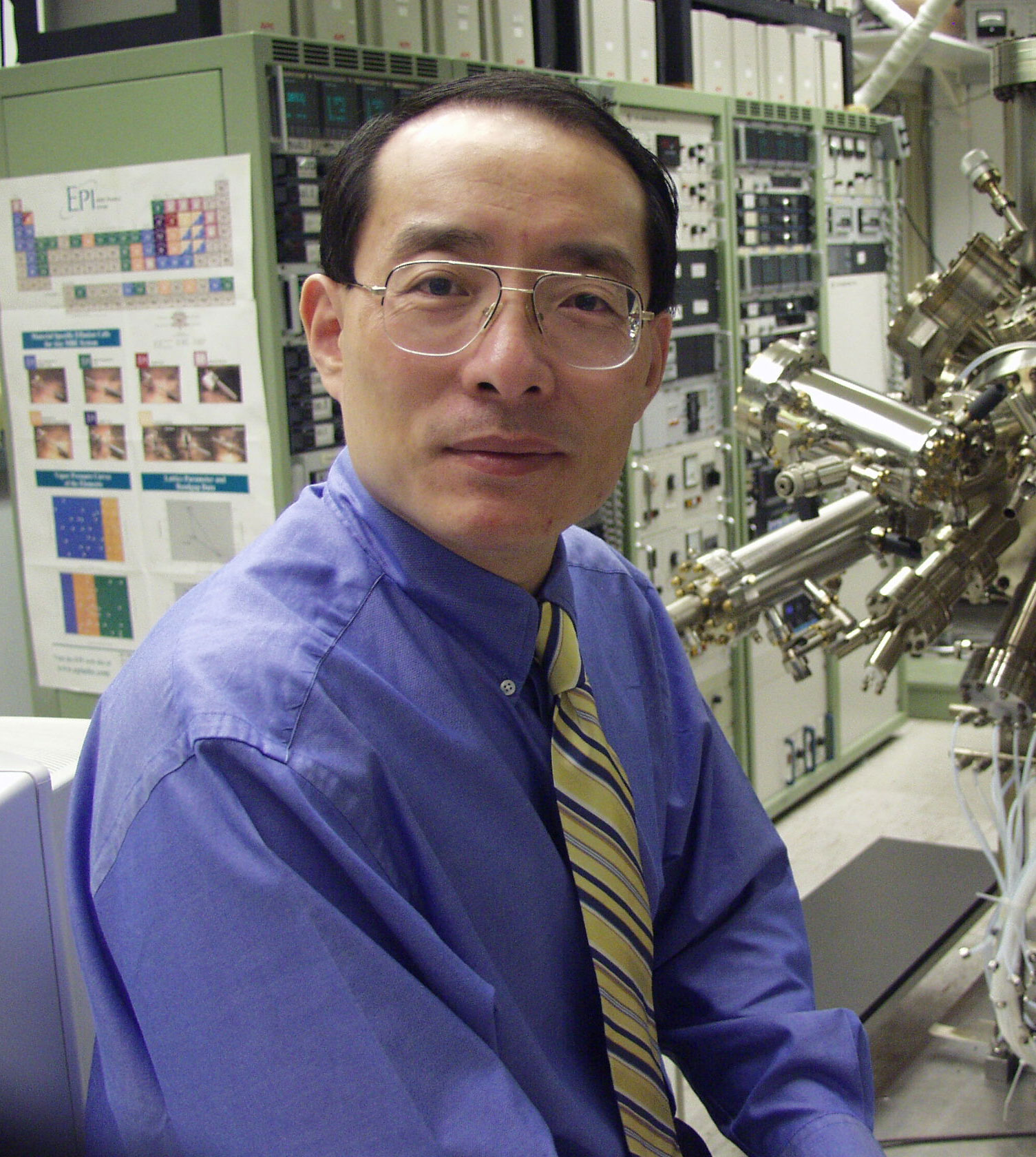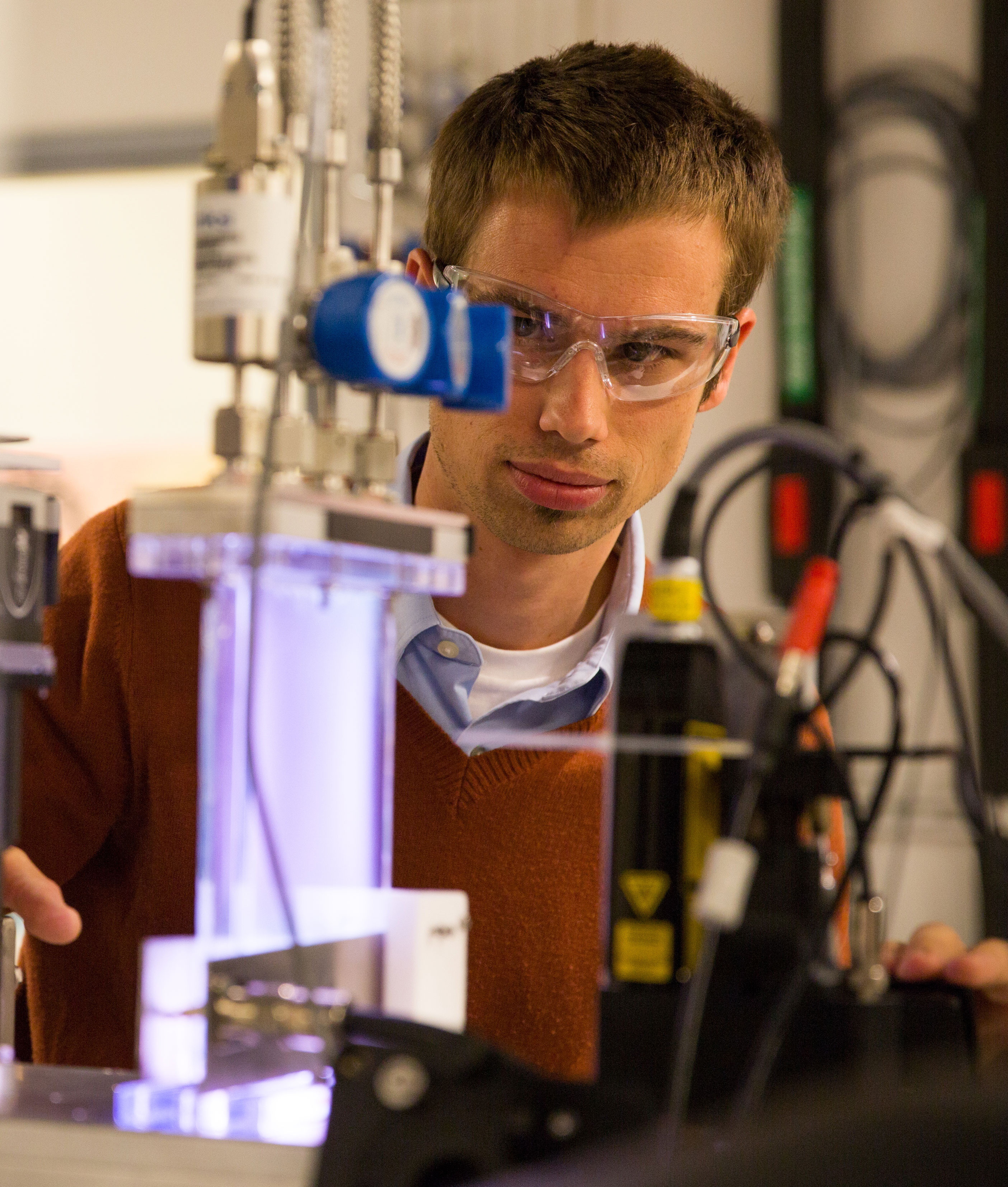Companies making solar panels have faced the same choice for decades. Their sun-soaking panels could be efficient or cheap, but not both.
Time to start erasing that rule.
Researchers within the Ira A. Fulton Schools of Engineering have wedded two types of solar technologies, putting solar panels a step closer to being cheaper and more accessible.
Here’s the challenge researchers faced: solar panels made with silicon are expensive but more efficient than the cheaper, thin film solar cells, which are made with cadmium telluride.
The ASU team, led by electrical engineering professor Yong-Hang Zhang and assistant professor Zachary Holman, figured out how to add a little silicon to the thin film cells, combining the qualities of each type of panel.
Their invention broke an efficiency record for thin film cells and achieved the highest open-circuit voltage ever recorded for that type of cell. Their results were published this week in a paper in the journal Nature Energy.
Overcoming obstacles
Open-circuit voltage measures the potential for a solar cell to pump electricity around a circuit. High voltage is created when light is absorbed in a solar cell, exciting electrons by shaking them off their atoms. The electrons then build up on one side of the solar cell, like at the negative terminal of a battery.
Engineering a solar cell with high voltage is challenging because the excited electrons can be lost within microseconds or even nanoseconds of sunlight hitting a solar cell. Thus, a goal of solar cell research is to extract the electricity before it dissipates, which is generally accomplished by adding conductive contacts to the top and bottom of a solar cell, according to Zhang (pictured left), who also is an associate dean for research in the Ira A. Fulton Schools of Engineering.
“The traditional contacts are made through introducing impurities in the solar cell absorbing layer,” said Zhang, “which can degrade the device performance dramatically.”
Zhang, Holman and their research teams added a separate contact layer of low-cost amorphous silicon instead of an impurity. In doing so, they created a solar cell with a voltage of 1.1 volt, an unimaginable feat even one year ago.
“Essentially, we’ve created a solar cell that allows for the maximum number of electrons possible to build up before extracting them quickly and efficiently out the ‘smart’ contact,” Zhang said.
The cells not only reached high voltage but also a 17 percent efficiency, breaking a record of 15.2 percent for thin film solar cells. While other types of solar cells, such as silicon, boast a best efficiency rating of around 25 percent, such a dramatic improvement in thin film efficiency shows promise for widespread use.
Zhang’s next goal is 20 percent efficiency or more.
Impact on industry
Materials science doctoral student Calli Campbell uses a molecular beam epitaxy machine to fabricate the solar cell wafers in Yong-Hang Zhang’s lab. Photo courtesy of Yong-Hang Zhang/ASU
“The important thing is that this material system has been proven cost effective, but (until now) never efficient enough in terms of energy production to take over the solar market,” said Zhang. “Many times with a paper such as this, the findings are either scientifically interesting or commercially applicable, but not both. However, these results are.”
While silicon solar panels dominate the market, there are about 10 gigawatts — enough to power 2.5 million homes — of thin film solar panels in use worldwide today. First Solar in Tempe, Arizona, is the world’s largest manufacturer of thin-film solar cells.
“These latest results further confirm our long-standing conviction that CdTe (cadmium telluride) is an ideal material choice for photovoltaic application,” said Markus Gloeckler, vice president of advanced research at First Solar. “Reaching an open-circuit voltage of 1.1 volts is a milestone for the technology and provides confidence that thin-film CdTe has not reached its limits.”
The first step in an ongoing collaboration
The success grew out of an unanticipated alliance between Zhang and Holman’s separate teams.
“It’s a unique collaboration, and one that happened in the best way possible: through student initiative,” said Holman (pictured left). “One of Yong’s students reached out to one of my post-docs, and things took off from there.”
Though Zhang and his group initially conceived the underlying concept of these breakthrough solar cells, it took them nearly two years to improve the materials needed to fabricate them. They also called upon Holman’s expertise in silicon solar cells to marry two very different semiconductors to achieve these unique and efficient properties.
Zhang and Holman look to use their respective expertise to collaborate in the future as well.
“We’re exploring the possibility of developing a tandem solar cell,” Holman said, “basically two complimentary solar cells that would stack on top of one another, further boosting efficiency.”
The two teams plan to continue collaboration and are slated to present their recent results at the upcoming Institute of Electrical and Electronics Engineers’ Photovoltaic Specialists Conference in Portland, Oregon, in June.
The research was mainly supported by funding from the U.S. Department of Energy’s Bay Area Photovoltaic Consortium (BAPVC), a collaboration between universities, industry and government dedicated to improving photovoltaic technology, jointly led by Stanford University and the University of California Berkeley. Additional funding was supplied through Quantum Energy and Sustainable Solar Technologies (QESST), one of the four National Science Foundation-funded Engineering Research Centers at the Fulton Schools at ASU.
Initial support for this research came from the Science Foundation Arizona in 2007, and following funding from the National Science Foundation, the Army Research Office, the Air Force Research Laboratory and Air Force Office of Scientific Research have paved the way to enabled many of these new ideas developed in the past 10 years, according to Zhang.
Top photo: A novel approach to a materials science challenge has birthed a record-breaking monocrystalline cadmium telluride solar cell, which boasts the highest voltage ever for its type of cell. Photo by Cheng-Ying Tsai/ASU
More Science and technology

ASU-led space telescope is ready to fly
The Star Planet Activity Research CubeSat, or SPARCS, a small space telescope that will monitor the flares and sunspot activity of low-mass stars, has now passed its pre-shipment review by NASA.…

ASU at the heart of the state's revitalized microelectronics industry
A stronger local economy, more reliable technology, and a future where our computers and devices do the impossible: that’s the transformation ASU is driving through its microelectronics research…

Breakthrough copper alloy achieves unprecedented high-temperature performance
A team of researchers from Arizona State University, the U.S. Army Research Laboratory, Lehigh University and Louisiana State University has developed a groundbreaking high-temperature copper alloy…





